Scene of alleged poaching by top Thai road-builder
By Colin Hastings
By Colin Hastings
|
Conservationists are ringing the alarm bells over plans to build a 138 km highway linking the massive Dawei special economic zone in Myanmar to Kanchanaburi in western Thailand as it cuts through the heart of the region’s last great biodiversity-rich wilderness, a unique area that straddles the borders of both countries.
IN Thailand itself, the proposed highway bisects the country’s chain of national parks called the Western Forest Complex – home to a host of threatened wildlife including leopards, tigers, elephants and primates.
Behind the project’s construction is Italian-Thai Development (ITD), whose president Premchai Karnasuta was recently alleged to have taken part in a hunting trip in Thungyai Naresuan wildlife sanctuary, a World Heritage Site, which resulted in the killing of several protected wildlife species, in particular, a rare black leopard. Park rangers alleged they found Mr Premchai and three associates with guns, the skin of a black leopard and soup made from the female leopard’s tail. The sanctuary lies just north of the Dawei to Kanchanaburi highway. Local activists are calling for the construction chief to step down from his role. Ti Lo Su. Massive and magnificent - with 98 cascades in all, each slightly different in shape, form and character from the rest. It is a sight never to be forgotten and, hopefully, left in peace for all time. |
Meanwhile, opponents of the two-lane highway say it is a threat to the survival of precious species in one of the region’s largest intact forest
areas, connecting forests in Thailand and Myanmar.
The Western Forest complex in Thailand has the biggest population of wild tigers outside India and Nepal. It includes Kaeng Krachan National Park to the south, home to leopards, clouded leopards, black panthers as well as tigers.
“It’s one of the largest intact forest areas in Southeast Asia and what’s
really unique about it is not only the wildlife that lives there but also how it provides a very important connection between the forest in Thailand and the forest in Myanmar,” the World Wildlife Fund’s (WWF) Hanna Helsingen told the ABC.
“This allows for species such as tigers and elephants to move on the landscape, to feed and mate, and disperse, which is critical for functioning ecosystems and the survival of these species.”
areas, connecting forests in Thailand and Myanmar.
The Western Forest complex in Thailand has the biggest population of wild tigers outside India and Nepal. It includes Kaeng Krachan National Park to the south, home to leopards, clouded leopards, black panthers as well as tigers.
“It’s one of the largest intact forest areas in Southeast Asia and what’s
really unique about it is not only the wildlife that lives there but also how it provides a very important connection between the forest in Thailand and the forest in Myanmar,” the World Wildlife Fund’s (WWF) Hanna Helsingen told the ABC.
“This allows for species such as tigers and elephants to move on the landscape, to feed and mate, and disperse, which is critical for functioning ecosystems and the survival of these species.”
| Magnificent, incomparable Ti Lo Su, Thailand’s rarely seen waterfall The kingdom’s biggest and most spectacular waterfall is located in Thungyai Naresuan and Huay Kha Khaeng forests in western Thailand, within the Umphang Wildlife Sanctuary, an area recently in the public spotlight because of alleged illegal poaching by one of Thailand’s senior business executives. |
Twenty years ago, our sister travel magazine, Journeys in Asia (Vol1, No3), published a story about these natural wonders and pointed out the threats to their very existence.
What was said back then remains just as important and relevant today.
This is our story:
Near the border with Myanmar is a vast forest, pristine and magnificent, with the most spectacular waterfall in all of Southeast Asia, the incomparable Ti Lo Su. As painful as it is to acknowledge, the great forests of Southeast Asia are disappearing at a frightening rate. As recently as 70 years ago, for example, some 70% of Thailand was forested. Today it can barely muster a few pockets of its original character –
rainforest with incalculable value to the human race. One such remaining area is the magnificent Umphang Wildlife Sanctuary and adjoining Thungyai Naresuan and Huay Kha Khaeng forests close to the Burmese border.
Still largely unknown to the outside world and unexplored, the vast forests that make up this wilderness have been recognised as a region of unique significance, extremely rich in plant and animal species. To its credit, the Thai government has done what it can to protect this sanctuary
for future generations, but it may not be enough. Recent disturbing reports of illegal logging have yet again underlined that man’s greed knows no bounds and the incredible treasures that exist within the forest are under constant threat.
What was said back then remains just as important and relevant today.
This is our story:
Near the border with Myanmar is a vast forest, pristine and magnificent, with the most spectacular waterfall in all of Southeast Asia, the incomparable Ti Lo Su. As painful as it is to acknowledge, the great forests of Southeast Asia are disappearing at a frightening rate. As recently as 70 years ago, for example, some 70% of Thailand was forested. Today it can barely muster a few pockets of its original character –
rainforest with incalculable value to the human race. One such remaining area is the magnificent Umphang Wildlife Sanctuary and adjoining Thungyai Naresuan and Huay Kha Khaeng forests close to the Burmese border.
Still largely unknown to the outside world and unexplored, the vast forests that make up this wilderness have been recognised as a region of unique significance, extremely rich in plant and animal species. To its credit, the Thai government has done what it can to protect this sanctuary
for future generations, but it may not be enough. Recent disturbing reports of illegal logging have yet again underlined that man’s greed knows no bounds and the incredible treasures that exist within the forest are under constant threat.
| Once regarded as an impenetrable jungle that only the most desperate opium warlords and criminals could tame, Umphang Wildlife Sanctuary and Thungyai Naresuan Huay Kha Khaeng, a World Heritage Site, nonetheless now form part of the biggest tract of virgin jungle left in Thailand. Umphang itself is the largest district in Tak province and covers an area of more than 4.3 million square kilometres, most of which comprises jungle-clad mountains. Apart from a few lodges on the edge of the rainforest near the village of Umphang, it is an area of pristine jungle and raging rivers, still unmapped and unknown to the outside world. The sanctuary forms Thailand’s last frontier, a reminder of how nature once dominated man, and not the other way around. Its purity is in stark contrast to most of the other areas of Southeast Asia that are often exaggeratedly promoted as pristine. Although visitors’ access is restricted, jungle trekking-whitewater trips lasting up to six days are available through some adventure travel agencies. Bookings must be made in advance and with the cooperation of local forestry officials. Most visitors are irresistibly drawn to the idea of spending a week immersed in virgin jungle, complete with physical challenges, exotica flora and fauna, and the delicious possibility of the unexpected. |
There is also the tantalising prospect of being one of a privileged few to set eyes on the area’s major known attraction, Ti Lo Su, the most eye-catching waterfall in Southeast Asia. Astonishingly, these falls were only discovered by accident in 1987, when a low-flying helicopter passed over the jungle. Equally amazing is the fact that few photographs and precious little information on Ti Lo Su are available anywhere. Even the latest travel books and maps pay only scant attention to the wonders here.
In the past, the only way to get to Umphang was along the old dirt road from Mae Sot, which cut into the bandit country full of communist insurgents and rebel outposts of Myanmar. Even for local people, it was a passage to be avoided.
Today, a new road links peaceful Umphang to the rest of Thailand. With Bangkok some 660km to the southeast, it is far enough to discourage mass tourism, though there are domestic flights from the capital to Mae Sot near the Burmese border. Its status as a newly established wildlife sanctuary will hopefully ensure that a large portion of the area remains protected. Besides, only a few of visitors succeed in penetrating its depths.
In the past, the only way to get to Umphang was along the old dirt road from Mae Sot, which cut into the bandit country full of communist insurgents and rebel outposts of Myanmar. Even for local people, it was a passage to be avoided.
Today, a new road links peaceful Umphang to the rest of Thailand. With Bangkok some 660km to the southeast, it is far enough to discourage mass tourism, though there are domestic flights from the capital to Mae Sot near the Burmese border. Its status as a newly established wildlife sanctuary will hopefully ensure that a large portion of the area remains protected. Besides, only a few of visitors succeed in penetrating its depths.
The waters of the Mae Klong, which runs through the heart of the region, rise and fall depending on the season. From October to February, the river almost doubles in volume and turns into a fearsome force, making it ideal for white-water rafting, though many argue with some justification that such “eco-friendly” activities are against the real spirit of the wilderness.
This rich, lush environment is thick with wildlife. Its inhabitants include the brilliant blue martin fishers, which skim across the water like skipping stones, elegant eagles gliding and spiralling on the warm thermals, hornbills, langurs, tapirs, and the delightful drongo, a delicate bird with an impossibly long 30cm tail. Never far from one’s thoughts are the crocodiles that laze on the riverbanks. The real prize, however, is tigers. These jungles are one of the last refuges of this magnificent creature in Southeast Asia. Though extremely rare, tigers have been recently photographed, dispelling rumours that they had become extinct.
The Mae Klong is punctuated by some of the most awesome rapids in Thailand, and perhaps even in the whole of Southeast Asia. A boiling mass of raging water, it takes an expert hand to negotiate the rocks and boulders that lie so terrifyingly in wait. Some three kilometres south of Umphang is breathtaking Ti Lo Su or Falling Rain Waterfall. Set amongst jungle alive with the sound of cicadas droning like bagpipes, long-legged spiders with the green body and yellow spots, and groups of monkeys playing in the threes, Ti Lo So drops like silver rain over several tiers.
The Umphang Wildlife Sanctuary is connected with Thungyai Naresuan and Huay Kha Khaeng forests to the south. Together, they form a fragile area of rich biodiversity and the largest remaining forest in Thailand. The area’s protected status is primarily due to the sacrifice of one man, Seub Nakhasathien, who lived here before it became a sanctuary. When plans were announced to dam the Mae Klong and flood the valleys, Seub led the struggle to have the area declared a World Heritage Site by the United Nations. He rallied the local people but ran into opposition from business interests that stood to make a lot of money from the dam project. In desperation, and to demonstrate to the world the importance of the cause, Seub took his own life. The opposition backed down from the project, and the United Nations finally approved the forest’s designation as a World Heritage Site in 1989.
This rich, lush environment is thick with wildlife. Its inhabitants include the brilliant blue martin fishers, which skim across the water like skipping stones, elegant eagles gliding and spiralling on the warm thermals, hornbills, langurs, tapirs, and the delightful drongo, a delicate bird with an impossibly long 30cm tail. Never far from one’s thoughts are the crocodiles that laze on the riverbanks. The real prize, however, is tigers. These jungles are one of the last refuges of this magnificent creature in Southeast Asia. Though extremely rare, tigers have been recently photographed, dispelling rumours that they had become extinct.
The Mae Klong is punctuated by some of the most awesome rapids in Thailand, and perhaps even in the whole of Southeast Asia. A boiling mass of raging water, it takes an expert hand to negotiate the rocks and boulders that lie so terrifyingly in wait. Some three kilometres south of Umphang is breathtaking Ti Lo Su or Falling Rain Waterfall. Set amongst jungle alive with the sound of cicadas droning like bagpipes, long-legged spiders with the green body and yellow spots, and groups of monkeys playing in the threes, Ti Lo So drops like silver rain over several tiers.
The Umphang Wildlife Sanctuary is connected with Thungyai Naresuan and Huay Kha Khaeng forests to the south. Together, they form a fragile area of rich biodiversity and the largest remaining forest in Thailand. The area’s protected status is primarily due to the sacrifice of one man, Seub Nakhasathien, who lived here before it became a sanctuary. When plans were announced to dam the Mae Klong and flood the valleys, Seub led the struggle to have the area declared a World Heritage Site by the United Nations. He rallied the local people but ran into opposition from business interests that stood to make a lot of money from the dam project. In desperation, and to demonstrate to the world the importance of the cause, Seub took his own life. The opposition backed down from the project, and the United Nations finally approved the forest’s designation as a World Heritage Site in 1989.
| The wildlife sanctuary is now protected from commercial exploitation. The Myanmar side is rich with quality teak and still in danger. An astonishing portion of the forest remains largely unknown, but exploration continues on a controlled scale. The general public is restricted, and camping is allowed only at designated sites. Most visitors explore the area by raft, starting from Umphang and floating down the Mae Klong past some hot springs located on the river’s edge. Beyond is Phapung, an area full of beehives. Arriving at Ta Sai, there is a four-kilometre trail leading to Ti Lo Su waterfall. From the town of Umphang to Ti Lo So is a distance of approximately 35 kilometres. |
Those who venture farther are treated to the sight of some truly awesome rainforest either side of the Huai Klotho river. This is a haven for a huge variety of birds and animals. Thailand has 920 species of birds, almost twice as many as the whole of Europe, and they all seem to winter here. Just past the junction of the Huai Klotho and Mae Klong rivers is beautiful Ti Lo Re, a series of veil-like falls that trail in fine sheets all the way along the rock wall. Nearby are some more hot springs and a series of moss-covered edges climbing in steps for 100m up a sunless cliff.
There’s surely no better way of reaching the sanctuary than on the back of an elephant, a journey of at least four hours from Umphang. Within this area are park headquarters offering clean Thai style toilets and showers, kitchen for cooking and covered picnic tables.
There’s surely no better way of reaching the sanctuary than on the back of an elephant, a journey of at least four hours from Umphang. Within this area are park headquarters offering clean Thai style toilets and showers, kitchen for cooking and covered picnic tables.
To read The BigChilli April 2018 issue, please visit The BigChilli April issue

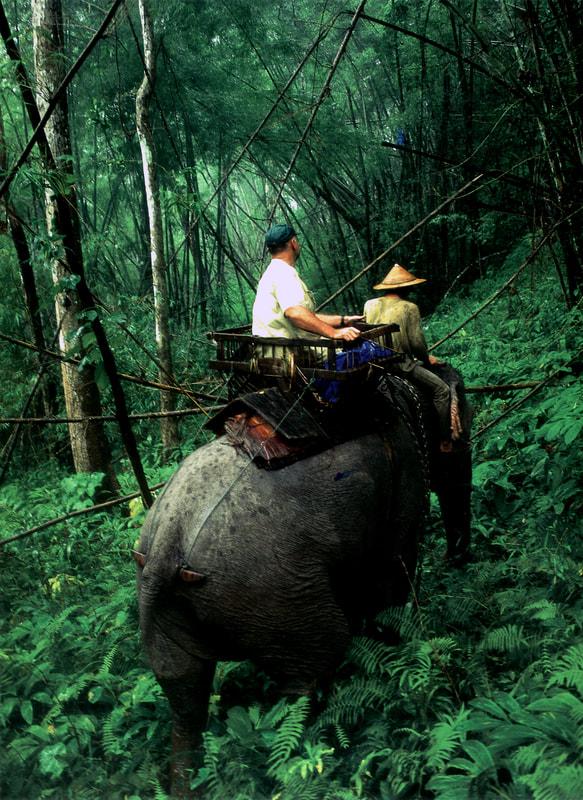
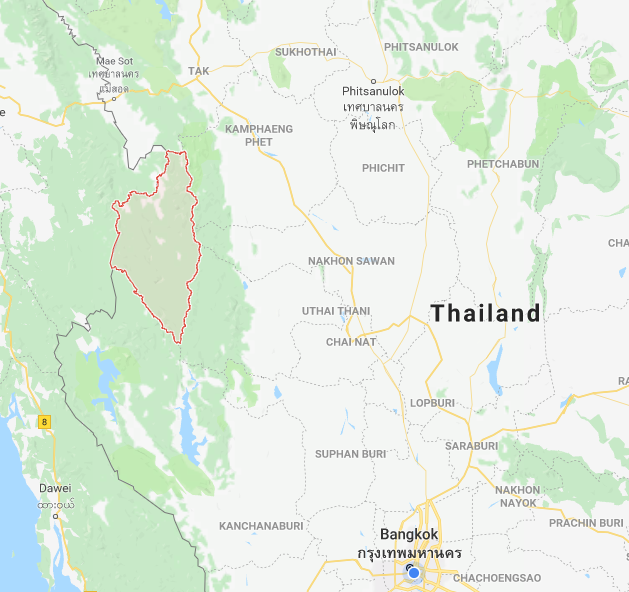
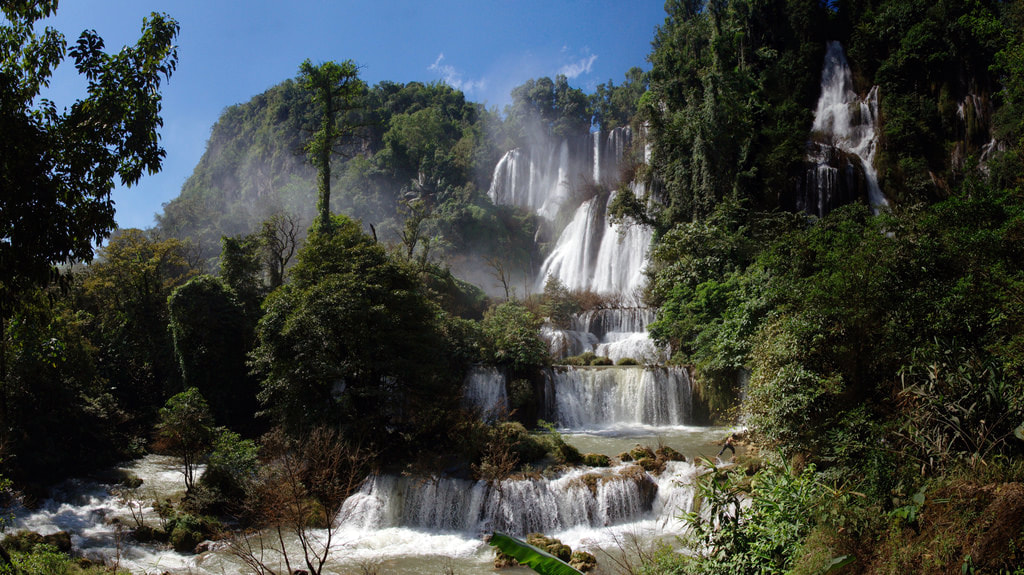
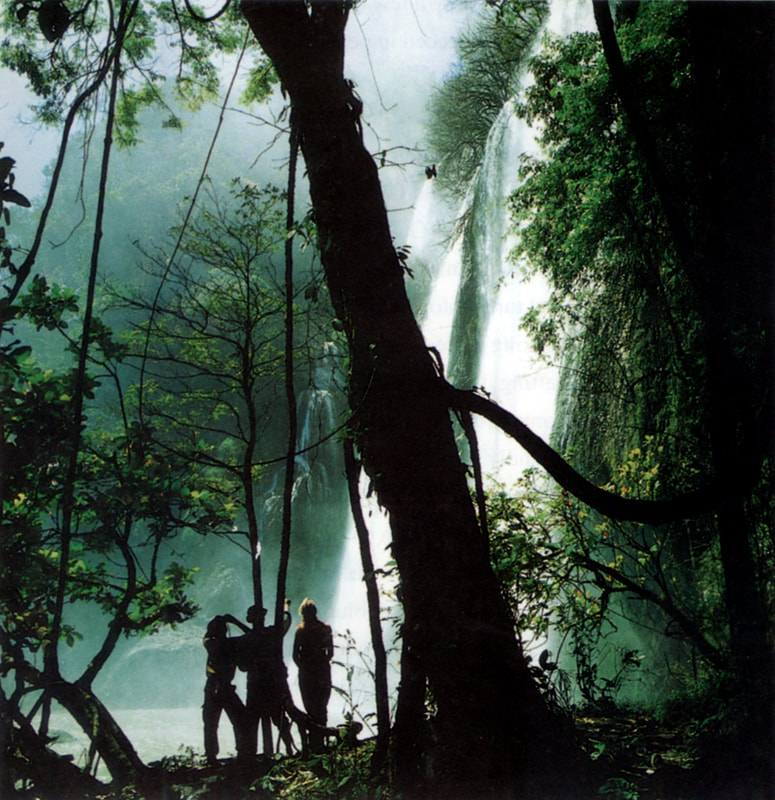
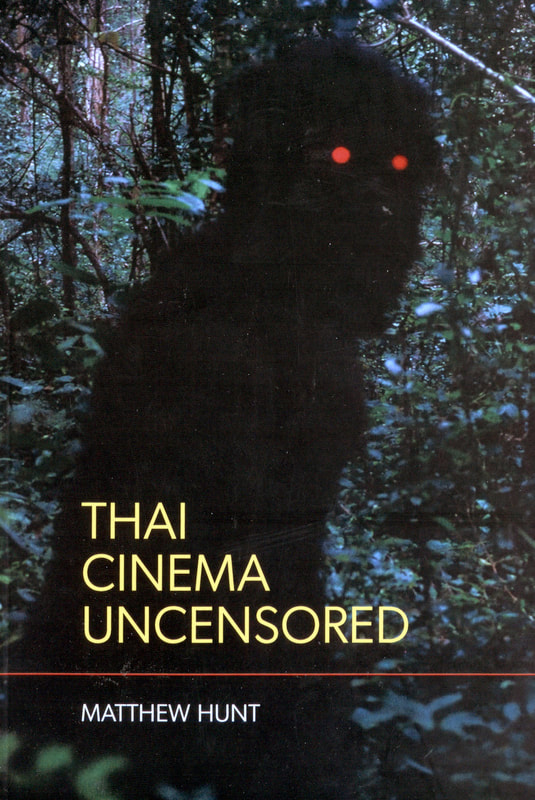
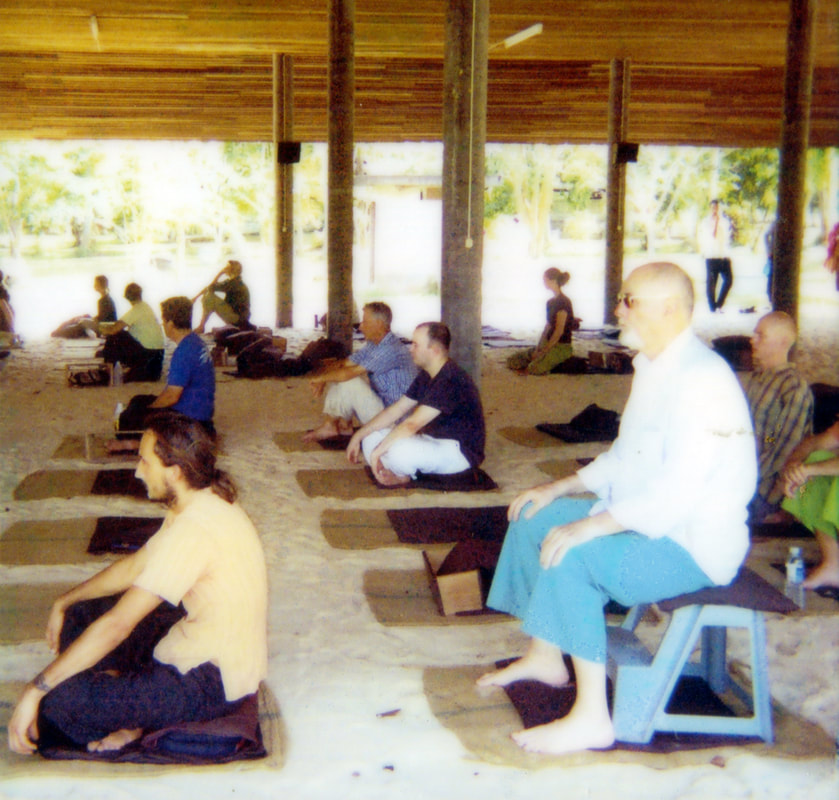
 RSS Feed
RSS Feed



